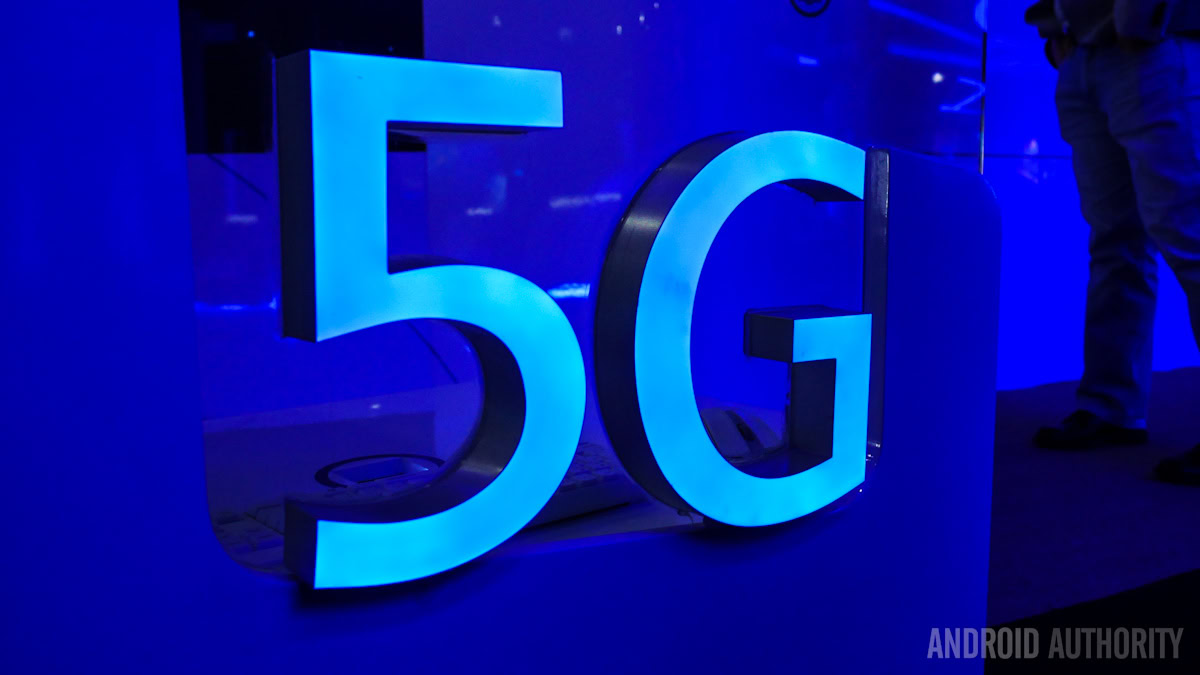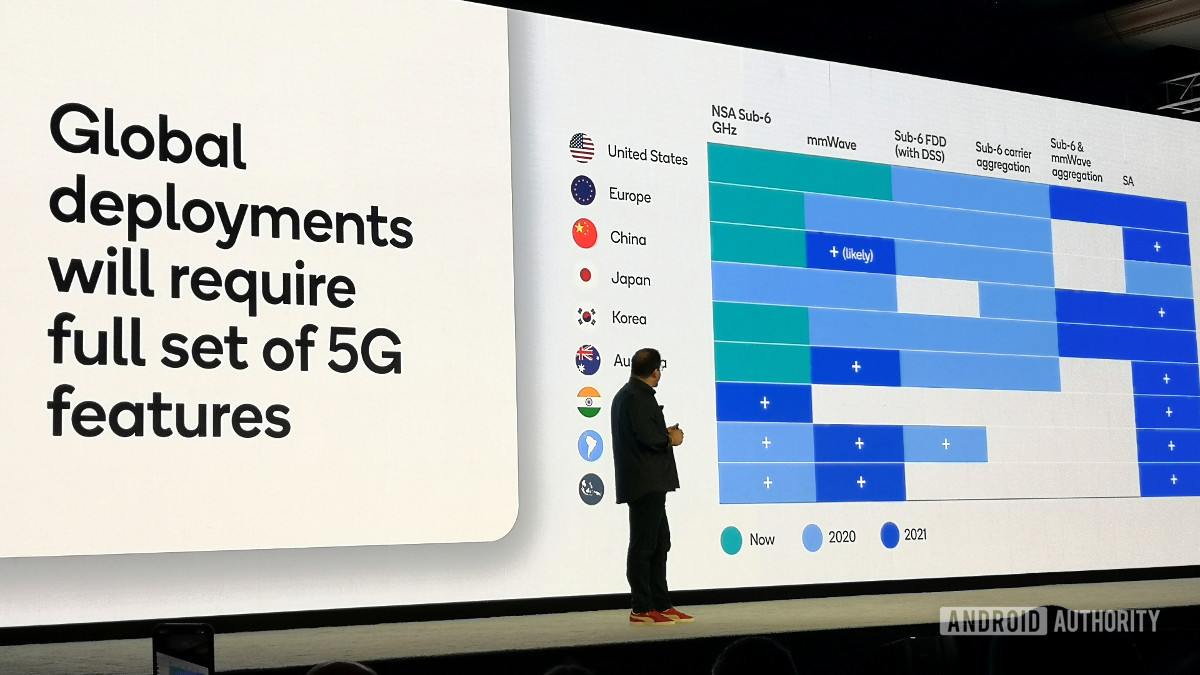
2019 is the year that 5G arrived for early adopters. 2020 is the year that 5G becomes mainstream.
At least that's what the big market players and those building 5G smartphones want us to believe. Although fifth-generation networks provide amazingly fast speeds in the right conditions, most smartphone owners aren't living on the few streets that offer mmWave connections. Let alone own a compatible $1,000+ handset.
To put it bluntly, 5G hasn't been at the forefront of consumer buying habits in 2019. However, a number of key developments mean that this situation could well change in 2020. Here's what to expect from 5G networks and 5G smartphones in the new decade.
5G on a global scale
5G networks are only available in a small selection of countries at the moment. Australia, China, Korea, the US, the UK, and other parts of Europe have all launched networks in 2019. So far, only the US has adopted mmWave 5G technology. Meaning that super-fast multi-gigabit speed examples that are so often showcased are reserved for US customers, and only then for those in certain cities. Although with sub-6GHz opening up lots more spectrum in Europe and other parts of the world, these countries will have the advantage of gigabit speeds paired with decent 5G coverage.
Don't miss: Best 5G phones you can buy and all the 5G phones coming soon
A number of new countries roll out their first 5G networks in 2020. This includes Japan and a number of other nations in Europe, South East Asia, and South America. Korea, Japan, and parts of Europe are expected to begin mmWave adoption at some point in 2020, although expect limited availability. This is likely to be the network rollout formula over the next few years; coverage starts in the sub-6GHz and low bands before mmWave boosts speeds in large metropolitan areas.

Qualcomm's expectation for global 5G deployment at the Snapdragon Tech Summit 2019.
However, it likely won't be until 2021 or later that India, the world's second-largest phone market, begins its 5G rollout. Furthermore, most of the world's 5G networks won't kickstart mmWave rollouts until 2021 or later. 5G Standalone networking is also still several years away for most of the world. This means consumers will continue to see 5G coverage drop in and out when moving into 4G-only areas. Not forgetting the other behind the scenes benefits of Standalone networks.
Global 5G network coverage will improve in 2020.
5G network coverage will be more common in 2020 and speeds should be faster too. However, the global deployment picture is much slower. Furthermore, mmWave and even 5G coverage, in general, will remain spotty even in countries like the US and UK which have advanced rollouts. Ubiquitous coverage is still years away.
Forget about 4G flagships
With 5G network coverage improving and hardware technology finally ready, flagship smartphones are able to transition from the 4G/5G release schedule in 2019 to a 5G-only roadmap in 2020. 2020 flagship smartphones packing Qualcomm's Snapdragon 865 will all offer some form of 5G capability.
However, not every 5G smartphone will necessarily be the same, as regional 5G deployments are so different. It doesn't make a lot of sense to launch a mmWave capable smartphone in a market without mmWave networks, for example. We can probably expect some confusion over regional phone variants in 2020.
Overall, few, if any, high-end releases won't support 5G. This hopefully means a bit of price pressure competition for consumers. Not everyone is willing to pay four figures for potentially faster data speeds.
Affordable 5G smartphones arrive just in time

5G smartphones are currently some of the most expensive handsets on the market. That will change in 2020, thanks to more affordable 5G chipsets and components. The Snapdragon 765, Exynos 980, and MediaTek Dimensity 1000 5G SoCs offer integrated 5G capabilities and will likely end up in handsets in the $500-$600 range.
There is an important distinction between these chipsets though. Only the Snapdragon 765 supports mmWave frequency bands. The MediaTek and Samsung chips only support sub-6GHz. Mid-range 5G handsets may have very different radio capabilities and therefore data speeds when compared to flagship 5G smartphones sporting mmWave antennas. Qualcomm is attempting to simplify 5G mmWave handset development with its new modular components. However, with most 5G markets only offering sub-6GHz in 2020, it won't be surprising if affordable handsets omit mmWave technology.
Many of the major mid-tier smartphone vendors have already announced plans for affordable 5G smartphones. Names include Nokia, Motorola, Oppo, and Xiaomi, and we could well see something more affordable from Samsung as well.
Should I buy a 5G smartphone in 2020?

Whether or not to upgrade to a 5G smartphone is a difficult question. If you're in need of an upgrade urgently, then it's a close call between sticking with today's excellent 4G handsets or leaping in with an early 5G model, warts and all. If not, waiting to see what 2020's flagships have on offer is a safer bet. Not only will you have more choice, but 5G phones with the latest chipsets will be more battery efficient and hopefully less expensive to boot.
mmWave will be slightly more common globally, but sub-6Ghz will remain the most common 5G technology.
The other half of the question is whether you can even benefit from 5G yet anyway? With coverage remaining spotty even in 5G designated metropolitan areas, you shouldn't be in a rush to grab a new phone just for faster data. It's also worth checking your carrier's plans for mmWave deployment before stumping up the cash for a compatible phone.
With more and more phones offering 5G by default, even at more affordable price points, upgrading in 2020 will offer you a level of future-proofing for the years to come.
More posts about 5G
from Android Authority https://ift.tt/2PVT1JC
via IFTTT









No comments:
Post a Comment